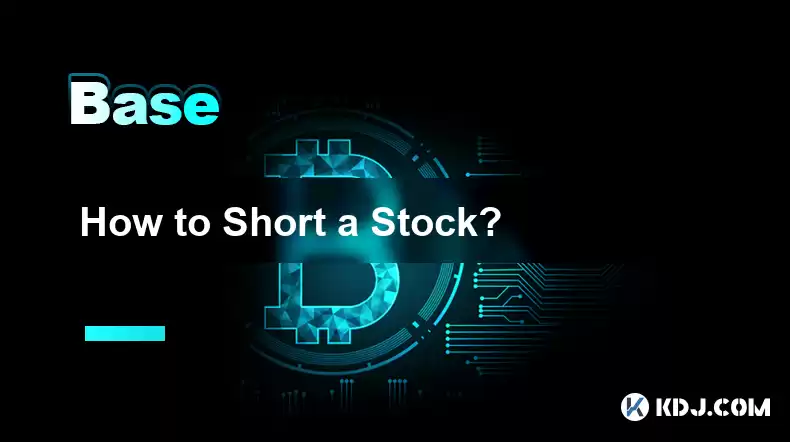-
 Bitcoin
Bitcoin $115000
0.12% -
 Ethereum
Ethereum $3701
4.50% -
 XRP
XRP $3.081
2.99% -
 Tether USDt
Tether USDt $0.0000
-0.01% -
 BNB
BNB $767.9
1.45% -
 Solana
Solana $169.5
3.13% -
 USDC
USDC $0.9999
0.01% -
 Dogecoin
Dogecoin $0.2106
4.30% -
 TRON
TRON $0.3334
1.62% -
 Cardano
Cardano $0.7564
2.54% -
 Stellar
Stellar $0.4165
0.76% -
 Hyperliquid
Hyperliquid $38.75
0.25% -
 Sui
Sui $3.593
3.00% -
 Chainlink
Chainlink $17.08
3.59% -
 Bitcoin Cash
Bitcoin Cash $573.6
4.35% -
 Hedera
Hedera $0.2508
-0.84% -
 Avalanche
Avalanche $23.07
6.46% -
 Ethena USDe
Ethena USDe $1.001
-0.02% -
 Litecoin
Litecoin $120.8
8.17% -
 UNUS SED LEO
UNUS SED LEO $8.943
-0.32% -
 Toncoin
Toncoin $3.400
-5.60% -
 Shiba Inu
Shiba Inu $0.00001255
1.54% -
 Uniswap
Uniswap $9.908
6.32% -
 Polkadot
Polkadot $3.718
2.10% -
 Monero
Monero $303.0
-0.74% -
 Dai
Dai $0.9999
-0.02% -
 Bitget Token
Bitget Token $4.392
0.91% -
 Cronos
Cronos $0.1403
6.31% -
 Pepe
Pepe $0.00001076
1.13% -
 Aave
Aave $267.2
1.80%
How to Short a Stock?
Short selling provides the potential for high returns but also carries unlimited loss potential, emphasizing the need for thorough research and risk management strategies.
Dec 17, 2024 at 11:10 pm

Key Points:
- Understanding short selling
- Benefits and risks of short selling
- Identifying suitable stocks for shorting
- Mechanics of short selling
- Managing short positions
- Common mistakes in short selling
How to Short a Stock
Understanding Short Selling
Short selling involves borrowing shares of a company with the intention of selling them in the hope of buying them back at a lower price later on. The primary goal is to profit from a decline in the stock's value. The borrower pays interest on the borrowed shares until the position is closed by buying them back to return to the lender.
Benefits and Risks of Short Selling
- Potential for high returns: Short selling can generate significant profits if the stock price falls.
- Hedging against risk: Short positions can be used to hedge against potential losses in other investments.
- Liquidity: Short selling is typically available for heavily traded stocks, ensuring liquidity and ease of execution.
Risks:
- Unlimited loss potential: Unlike buying a stock, losses in short selling can be theoretically unlimited as there is no cap on how high the stock price can rise.
- Margin calls: Short sellers may be required to post margin to cover potential losses, which can become a significant expense.
- Short squeezes: If the stock price rises unexpectedly, short sellers may be forced to buy back shares at a higher price to cover their positions, leading to potential losses.
Identifying Suitable Stocks for Shorting
- Overvalued stocks: Stocks that are trading at significantly higher prices than their intrinsic value.
- Weak fundamentals: Companies with poor earnings, high debt, or other financial weaknesses.
- Technical indicators: Using technical analysis to identify stocks showing signs of a downtrend.
- Market sentiment: Taking into account negative news, analyst downgrades, or industry headwinds.
Mechanics of Short Selling
- Borrowing shares: Contacting a brokerage firm to arrange for the borrowing of shares of the desired stock.
- Selling shares: Once shares are borrowed, they are sold in the market to establish the short position.
- Return of shares: The short position is closed by buying back the borrowed shares and returning them to the lender.
Managing Short Positions
- Monitoring stock price: Continuously tracking the stock's price to assess the profitability of the short position.
- Setting stop-loss orders: Placing orders to automatically sell the shares if the stock price rises to a predetermined level to limit losses.
- Covering the position: Buying back the borrowed shares at a lower price than the initial sale price to profit from the short position.
Common Mistakes in Short Selling
- Shorting overvalued stocks: Shorting stocks that are already undervalued and could potentially rise in value.
- Lack of research: Not conducting thorough due diligence before entering a short position.
- Ignoring technical indicators: Failing to consider technical analysis to determine the potential direction of the stock price.
- Panic selling: Closing short positions prematurely due to fear or lack of confidence.
- Chasing losses: Averaging down by buying more shares as the stock price falls, which can exacerbate losses.
FAQs
Q: What is the best time to short a stock?
A: Shorting a stock is most effective when the stock is overvalued or showing signs of weakness.
Q: Can you short any stock?
A: No, not all stocks can be shorted. Brokers may restrict short selling for certain stocks due to factors such as low liquidity or high volatility.
Q: What are the fees involved in short selling?
A: Short selling typically involves borrowing fees, interest payments on borrowed shares, and brokerage commissions.
Q: Is short selling always profitable?
A: No, short selling carries significant risk and can result in losses. The potential for profit depends on the accuracy of the short seller's analysis and the movement of the stock price.
Q: What is a short squeeze?
A: A short squeeze occurs when a heavily shorted stock rises in price, forcing short sellers to buy back shares to cover their positions, leading to even higher prices.
Disclaimer:info@kdj.com
The information provided is not trading advice. kdj.com does not assume any responsibility for any investments made based on the information provided in this article. Cryptocurrencies are highly volatile and it is highly recommended that you invest with caution after thorough research!
If you believe that the content used on this website infringes your copyright, please contact us immediately (info@kdj.com) and we will delete it promptly.
- Velo Universe, DEX, and DeFi Security: Navigating the Future of Decentralized Trading
- 2025-08-05 09:25:13
- Bitget Wallet Revolutionizes Solana with Gas-Free Transactions: A New Era for DeFi
- 2025-08-05 09:25:13
- Ozak AI, Crypto Boom, and ROI Potential: Is This the Next Big Thing?
- 2025-08-05 09:25:24
- Solana's ETF Hopes & the All-Time High Chase: Is SOL Set to Soar?
- 2025-08-05 09:25:24
- Coinbase's Brian Armstrong and the Art of Focused Work: A Deep Dive
- 2025-08-05 09:25:30
- Uniswap Price Prediction: Bullish Reversal on the Horizon?
- 2025-08-05 09:25:30
Related knowledge

What is the difference between CeFi and DeFi?
Jul 22,2025 at 12:28am
Understanding CeFi and DeFiIn the world of cryptocurrency, CeFi (Centralized Finance) and DeFi (Decentralized Finance) represent two distinct financia...

How to qualify for potential crypto airdrops?
Jul 23,2025 at 06:49am
Understanding What Crypto Airdrops AreCrypto airdrops refer to the distribution of free tokens or coins to a large number of wallet addresses, often u...

What is a crypto "airdrop farmer"?
Jul 24,2025 at 10:22pm
Understanding the Role of a Crypto 'Airdrop Farmer'A crypto 'airdrop farmer' refers to an individual who actively participates in cryptocurrency airdr...

What is the difference between a sidechain and a Layer 2?
Jul 20,2025 at 11:35pm
Understanding the Concept of SidechainsA sidechain is a separate blockchain that runs parallel to the main blockchain, typically the mainnet of a cryp...

What is the Inter-Blockchain Communication Protocol (IBC)?
Jul 19,2025 at 10:43am
Understanding the Inter-Blockchain Communication Protocol (IBC)The Inter-Blockchain Communication Protocol (IBC) is a cross-chain communication protoc...

How does sharding improve scalability?
Jul 20,2025 at 01:21am
Understanding Sharding in BlockchainSharding is a database partitioning technique that is increasingly being adopted in blockchain technology to enhan...

What is the difference between CeFi and DeFi?
Jul 22,2025 at 12:28am
Understanding CeFi and DeFiIn the world of cryptocurrency, CeFi (Centralized Finance) and DeFi (Decentralized Finance) represent two distinct financia...

How to qualify for potential crypto airdrops?
Jul 23,2025 at 06:49am
Understanding What Crypto Airdrops AreCrypto airdrops refer to the distribution of free tokens or coins to a large number of wallet addresses, often u...

What is a crypto "airdrop farmer"?
Jul 24,2025 at 10:22pm
Understanding the Role of a Crypto 'Airdrop Farmer'A crypto 'airdrop farmer' refers to an individual who actively participates in cryptocurrency airdr...

What is the difference between a sidechain and a Layer 2?
Jul 20,2025 at 11:35pm
Understanding the Concept of SidechainsA sidechain is a separate blockchain that runs parallel to the main blockchain, typically the mainnet of a cryp...

What is the Inter-Blockchain Communication Protocol (IBC)?
Jul 19,2025 at 10:43am
Understanding the Inter-Blockchain Communication Protocol (IBC)The Inter-Blockchain Communication Protocol (IBC) is a cross-chain communication protoc...

How does sharding improve scalability?
Jul 20,2025 at 01:21am
Understanding Sharding in BlockchainSharding is a database partitioning technique that is increasingly being adopted in blockchain technology to enhan...
See all articles

























































































